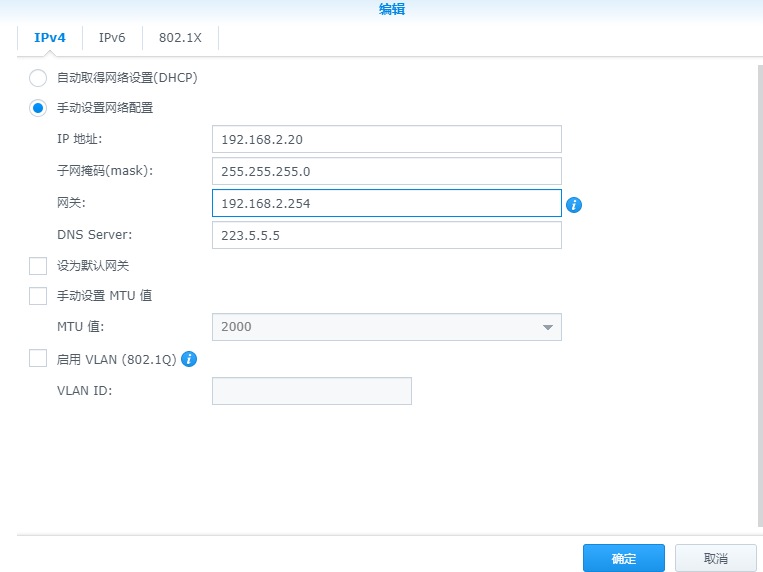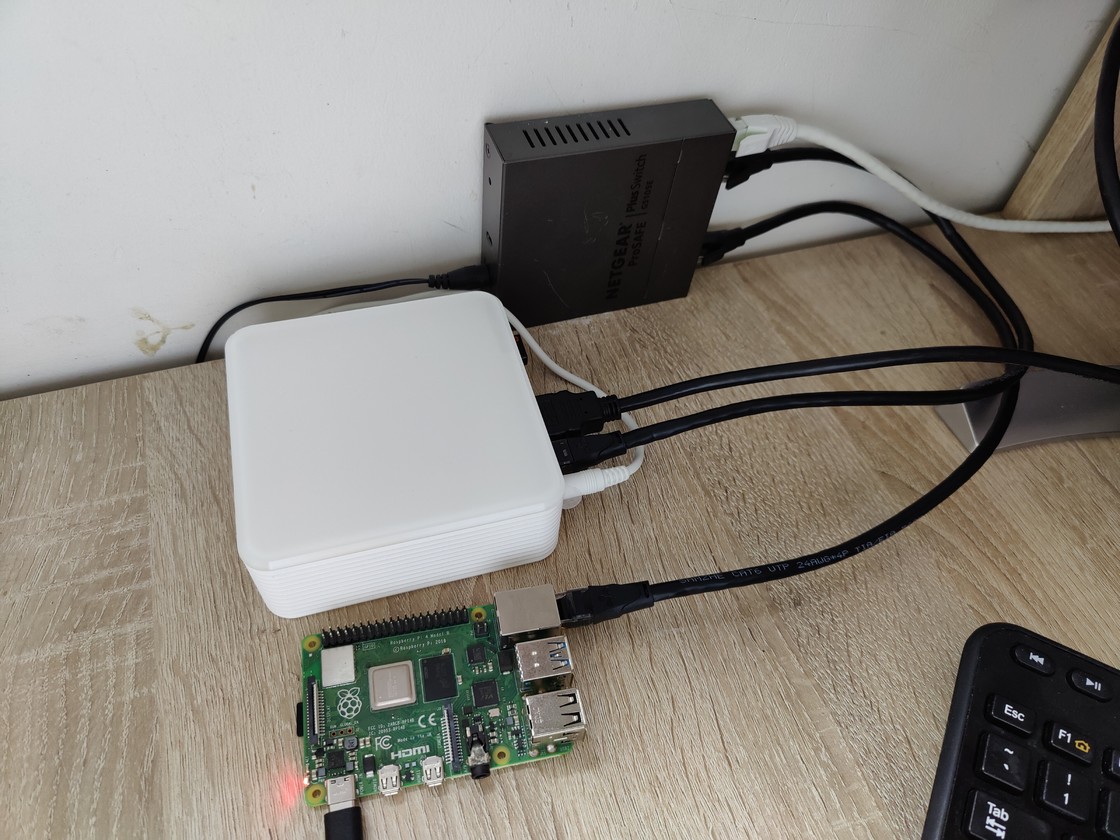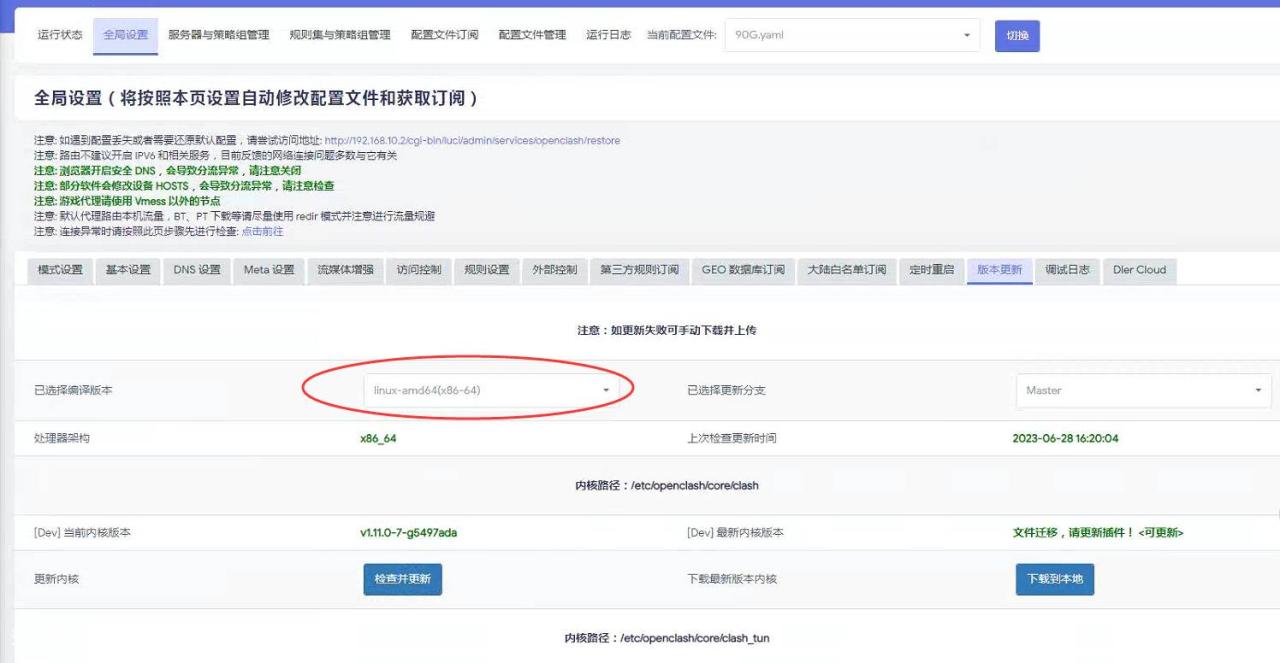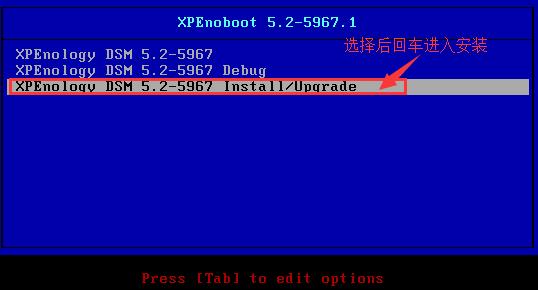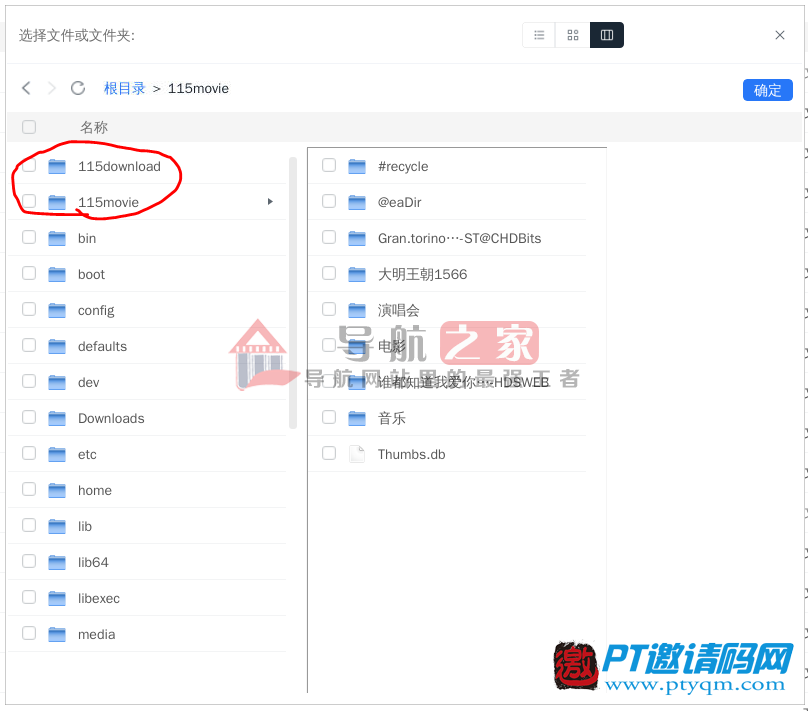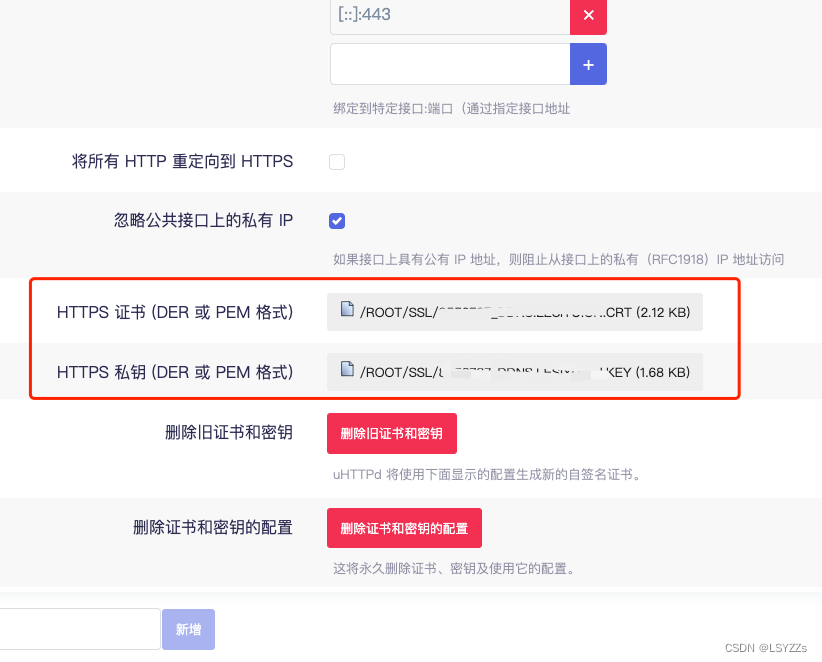最近看到有人在网上发布FRP的教程,但是写的都不详细,我自己整理了一下
目前主流的内网穿透有神卓互联,性能超级强劲,由C语言编写,亲测性能非常高,搞技术的达人应该都知道,但是这个是企业级收费的,界面如下,接下来就介绍一个免费的软件,叫FRP,功能差不多,只是用起来有点麻烦。
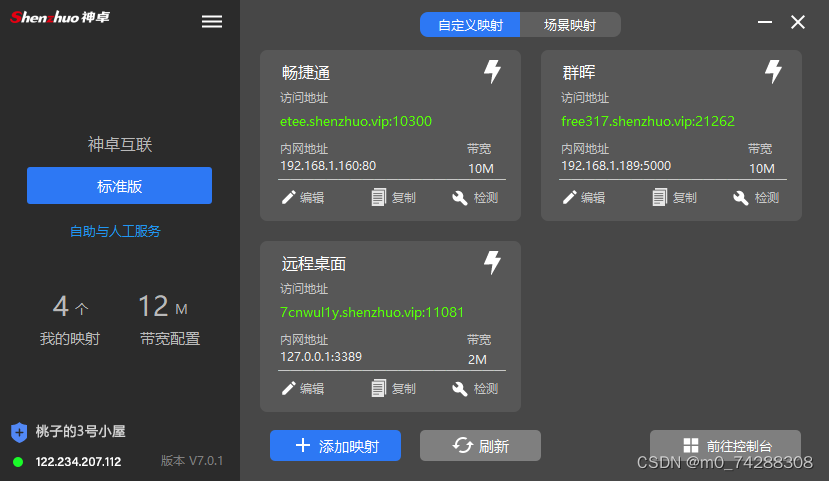
一、frp的作用
利用处于内网或防火墙后的机器,对外网环境提供 http 或 https 服务。
对于 http, https 服务支持基于域名的虚拟主机,支持自定义域名绑定,使多个域名可以共用一个80端口。
利用处于内网或防火墙后的机器,对外网环境提供 tcp 和 udp 服务,例如在家里通过 ssh 访问处于公司内网环境内的主机。
二、配置说明
1、实现功能
(1)外网通过ssh访问内网机器
(2)自定义绑定域名访问内网web服务
2、配置前准备
(1)公网服务器1台
(2)内网服务器1台(我这里演示的是linux环境,win10上面vmware安装的centos7)
(3)公网服务器绑定域名1个(实现二1中(1)功能不需要公网服务器绑定域名,二1中(2)功能必须需要公网服务器绑定域名)
(4)内网服务器部署一个web服务,可以用tomcat模拟,这里就不演示了
三、安装frp
1、公网服务器与内网服务器都需要下载frp进行安装,公网服务器(服务端)配置关注步骤6,内网服务器(客户端)关注步骤7
2、下载linux版本frp_0.13.0_linux_amd64.tar.gz
3、新建目录mkdir -p /usr/local/frp,上传frp_0.13.0_linux_amd64.tar.gz至linux服务器该目录下
4、解压tar -zxvf frp_0.13.0_linux_amd64.tar.gz
5、进入解压目录cd frp_0.13.0_linux_amd64,这里主要关注4个文件,分别是frpc、frpc.ini和frps、frps.ini,前者两个文件是客户端所关注文件,后者两个文件是服务端所关注两个文件。
6、配置服务端(公网服务器),首先删掉frpc、frpc.ini两个文件,然后再进行配置,vi ./frps.ini,
[common] bind_port = 7000 #与客户端绑定的进行通信的端口 vhost_http_port = 6081 #访问客户端web服务自定义的端口号[common] bind_port = 7000 #与客户端绑定的进行通信的端口 vhost_http_port = 6081 #访问客户端web服务自定义的端口号[common] bind_port = 7000 #与客户端绑定的进行通信的端口 vhost_http_port = 6081 #访问客户端web服务自定义的端口号
保存然后启动服务./frps -c ./frps.ini,这是前台启动,后台启动命令为nohup ./frps -c ./frps.ini &
7、配置客户端(内网服务器),首先删掉frps、frps.ini两个文件,然后再进行配置,vi ./frpc.ini
[common] server_addr = 120.56.37.48 #公网服务器ip server_port = 7000 #与服务端bind_port一致 #公网通过ssh访问内部服务器 [ssh] type = tcp #连接协议 local_ip = 192.168.3.48 #内网服务器ip local_port = 22 #ssh默认端口号 remote_port = 6000 #自定义的访问内部ssh端口号 #公网访问内部web服务器以http方式 [web] type = http #访问协议 local_port = 8081 #内网web服务的端口号 custom_domains = repo.iwi.com #所绑定的公网服务器域名,一级、二级域名都可以[common] server_addr = 120.56.37.48 #公网服务器ip server_port = 7000 #与服务端bind_port一致 #公网通过ssh访问内部服务器 [ssh] type = tcp #连接协议 local_ip = 192.168.3.48 #内网服务器ip local_port = 22 #ssh默认端口号 remote_port = 6000 #自定义的访问内部ssh端口号 #公网访问内部web服务器以http方式 [web] type = http #访问协议 local_port = 8081 #内网web服务的端口号 custom_domains = repo.iwi.com #所绑定的公网服务器域名,一级、二级域名都可以[common] server_addr = 120.56.37.48 #公网服务器ip server_port = 7000 #与服务端bind_port一致 #公网通过ssh访问内部服务器 [ssh] type = tcp #连接协议 local_ip = 192.168.3.48 #内网服务器ip local_port = 22 #ssh默认端口号 remote_port = 6000 #自定义的访问内部ssh端口号 #公网访问内部web服务器以http方式 [web] type = http #访问协议 local_port = 8081 #内网web服务的端口号 custom_domains = repo.iwi.com #所绑定的公网服务器域名,一级、二级域名都可以
保存然后执行./frpc -c ./frpc.ini启动,这是前台启动,后台启动命令为nohup ./frpc -c ./frpc.ini &
这样就可以了。
以下是脚本
#! /bin/bash # chkconfig: 2345 55 25 ### BEGIN INIT INFO # Provides: frps # Required-Start: $all # Required-Stop: $all # Default-Start: 2 3 4 5 # Default-Stop: 0 1 6 # Short-Description: starts the frps # Description: starts frps using start-stop ### END INIT INFO PATH=/usr/local/sbin:/usr/local/bin:/sbin:/bin:/usr/sbin:/usr/bin ProgramName="Frps" ProgramPath="/usr/local/frps" NAME=frps BIN=${ProgramPath}/${NAME} CONFIGFILE=${ProgramPath}/frps.ini SCRIPTNAME=/etc/init.d/${NAME} version="03.20" program_version=`${BIN} --version` RET_VAL=0 [ -x ${BIN} ] || exit 0 strLog="" fun_clangcn() { echo "" echo "+---------------------------------------------------------+" echo "| Manager for ${ProgramName}, Author Clang, Mender MvsCode |" echo "+---------------------------------------------------------+" echo "" } fun_check_run(){ PID=`ps -ef | grep -v grep | grep -i "${BIN}" | awk '{print $2}'` if [ ! -z $PID ]; then return 0 else return 1 fi } fun_load_config(){ if [ ! -r ${CONFIGFILE} ]; then echo "config file ${CONFIGFILE} not found" return 1 fi } fun_start() { if [ "${arg1}" = "start" ]; then fun_clangcn fi if fun_check_run; then echo "${ProgramName} (pid $PID) already running." return 0 fi fun_load_config echo -n "Starting ${ProgramName}(${program_version})..." ${BIN} -c ${CONFIGFILE} >/dev/null 2>&1 & sleep 1 if ! fun_check_run; then echo "start failed" return 1 fi echo " done" echo "${ProgramName} (pid $PID)is running." return 0 } fun_stop(){ if [ "${arg1}" = "stop" ] || [ "${arg1}" = "restart" ]; then fun_clangcn fi if fun_check_run; then echo -n "Stoping ${ProgramName} (pid $PID)... " kill $PID if [ "$?" != 0 ] ; then echo " failed" return 1 else echo " done" fi else echo "${ProgramName} is not running." fi return 0 } fun_restart(){ fun_stop fun_start } fun_status(){ PID=`ps -ef | grep -v grep | grep -i "${BIN}" | awk '{print $2}'` if [ ! -z $PID ]; then echo "${ProgramName} (pid $PID) is running..." else echo "${ProgramName} is stopped" exit 0 fi } checkos(){ if grep -Eqi "CentOS" /etc/issue || grep -Eq "CentOS" /etc/*-release; then OS=CentOS elif grep -Eqi "Debian" /etc/issue || grep -Eq "Debian" /etc/*-release; then OS=Debian elif grep -Eqi "Ubuntu" /etc/issue || grep -Eq "Ubuntu" /etc/*-release; then OS=Ubuntu elif grep -Eqi "Alpine" /etc/issue || grep -Eq "Alpine" /etc/*-release; then OS=Alpine elif grep -Eqi "Fedora" /etc/issue || grep -Eq "Fedora" /etc/*-release; then OS=Fedora else echo "Not support OS, Please reinstall OS and retry!" return 1 fi } fun_config(){ if [ -s ${CONFIGFILE} ]; then vi ${CONFIGFILE} else echo "${ProgramName} configuration file not found!" return 1 fi } fun_version(){ echo "${ProgramName} version ${program_version}" return 0 } fun_help(){ ${BIN} --help return 0 } arg1=$1 [ -z ${arg1} ] case "${arg1}" in start|stop|restart|status|config) fun_${arg1} ;; [vV][eE][rR][sS][iI][oO][nN]|-[vV][eE][rR][sS][iI][oO][nN]|--[vV][eE][rR][sS][iI][oO][nN]|-[vV]|--[vV]) fun_version ;; [Cc]|[Cc][Oo][Nn][Ff]|[Cc][Oo][Nn][Ff][Ii][Gg]|-[Cc]|-[Cc][Oo][Nn][Ff]|-[Cc][Oo][Nn][Ff][Ii][Gg]|--[Cc]|--[Cc][Oo][Nn][Ff]|--[Cc][Oo][Nn][Ff][Ii][Gg]) fun_config ;; [Hh]|[Hh][Ee][Ll][Pp]|-[Hh]|-[Hh][Ee][Ll][Pp]|--[Hh]|--[Hh][Ee][Ll][Pp]) fun_help ;; *) fun_clangcn echo "Usage: $SCRIPTNAME {start|stop|restart|status|config|version}" RET_VAL=1 ;; esac exit $RET_VAL#! /bin/bash # chkconfig: 2345 55 25 ### BEGIN INIT INFO # Provides: frps # Required-Start: $all # Required-Stop: $all # Default-Start: 2 3 4 5 # Default-Stop: 0 1 6 # Short-Description: starts the frps # Description: starts frps using start-stop ### END INIT INFO PATH=/usr/local/sbin:/usr/local/bin:/sbin:/bin:/usr/sbin:/usr/bin ProgramName="Frps" ProgramPath="/usr/local/frps" NAME=frps BIN=${ProgramPath}/${NAME} CONFIGFILE=${ProgramPath}/frps.ini SCRIPTNAME=/etc/init.d/${NAME} version="03.20" program_version=`${BIN} --version` RET_VAL=0 [ -x ${BIN} ] || exit 0 strLog="" fun_clangcn() { echo "" echo "+---------------------------------------------------------+" echo "| Manager for ${ProgramName}, Author Clang, Mender MvsCode |" echo "+---------------------------------------------------------+" echo "" } fun_check_run(){ PID=`ps -ef | grep -v grep | grep -i "${BIN}" | awk '{print $2}'` if [ ! -z $PID ]; then return 0 else return 1 fi } fun_load_config(){ if [ ! -r ${CONFIGFILE} ]; then echo "config file ${CONFIGFILE} not found" return 1 fi } fun_start() { if [ "${arg1}" = "start" ]; then fun_clangcn fi if fun_check_run; then echo "${ProgramName} (pid $PID) already running." return 0 fi fun_load_config echo -n "Starting ${ProgramName}(${program_version})..." ${BIN} -c ${CONFIGFILE} >/dev/null 2>&1 & sleep 1 if ! fun_check_run; then echo "start failed" return 1 fi echo " done" echo "${ProgramName} (pid $PID)is running." return 0 } fun_stop(){ if [ "${arg1}" = "stop" ] || [ "${arg1}" = "restart" ]; then fun_clangcn fi if fun_check_run; then echo -n "Stoping ${ProgramName} (pid $PID)... " kill $PID if [ "$?" != 0 ] ; then echo " failed" return 1 else echo " done" fi else echo "${ProgramName} is not running." fi return 0 } fun_restart(){ fun_stop fun_start } fun_status(){ PID=`ps -ef | grep -v grep | grep -i "${BIN}" | awk '{print $2}'` if [ ! -z $PID ]; then echo "${ProgramName} (pid $PID) is running..." else echo "${ProgramName} is stopped" exit 0 fi } checkos(){ if grep -Eqi "CentOS" /etc/issue || grep -Eq "CentOS" /etc/*-release; then OS=CentOS elif grep -Eqi "Debian" /etc/issue || grep -Eq "Debian" /etc/*-release; then OS=Debian elif grep -Eqi "Ubuntu" /etc/issue || grep -Eq "Ubuntu" /etc/*-release; then OS=Ubuntu elif grep -Eqi "Alpine" /etc/issue || grep -Eq "Alpine" /etc/*-release; then OS=Alpine elif grep -Eqi "Fedora" /etc/issue || grep -Eq "Fedora" /etc/*-release; then OS=Fedora else echo "Not support OS, Please reinstall OS and retry!" return 1 fi } fun_config(){ if [ -s ${CONFIGFILE} ]; then vi ${CONFIGFILE} else echo "${ProgramName} configuration file not found!" return 1 fi } fun_version(){ echo "${ProgramName} version ${program_version}" return 0 } fun_help(){ ${BIN} --help return 0 } arg1=$1 [ -z ${arg1} ] case "${arg1}" in start|stop|restart|status|config) fun_${arg1} ;; [vV][eE][rR][sS][iI][oO][nN]|-[vV][eE][rR][sS][iI][oO][nN]|--[vV][eE][rR][sS][iI][oO][nN]|-[vV]|--[vV]) fun_version ;; [Cc]|[Cc][Oo][Nn][Ff]|[Cc][Oo][Nn][Ff][Ii][Gg]|-[Cc]|-[Cc][Oo][Nn][Ff]|-[Cc][Oo][Nn][Ff][Ii][Gg]|--[Cc]|--[Cc][Oo][Nn][Ff]|--[Cc][Oo][Nn][Ff][Ii][Gg]) fun_config ;; [Hh]|[Hh][Ee][Ll][Pp]|-[Hh]|-[Hh][Ee][Ll][Pp]|--[Hh]|--[Hh][Ee][Ll][Pp]) fun_help ;; *) fun_clangcn echo "Usage: $SCRIPTNAME {start|stop|restart|status|config|version}" RET_VAL=1 ;; esac exit $RET_VAL#! /bin/bash # chkconfig: 2345 55 25 ### BEGIN INIT INFO # Provides: frps # Required-Start: $all # Required-Stop: $all # Default-Start: 2 3 4 5 # Default-Stop: 0 1 6 # Short-Description: starts the frps # Description: starts frps using start-stop ### END INIT INFO PATH=/usr/local/sbin:/usr/local/bin:/sbin:/bin:/usr/sbin:/usr/bin ProgramName="Frps" ProgramPath="/usr/local/frps" NAME=frps BIN=${ProgramPath}/${NAME} CONFIGFILE=${ProgramPath}/frps.ini SCRIPTNAME=/etc/init.d/${NAME} version="03.20" program_version=`${BIN} --version` RET_VAL=0 [ -x ${BIN} ] || exit 0 strLog="" fun_clangcn() { echo "" echo "+---------------------------------------------------------+" echo "| Manager for ${ProgramName}, Author Clang, Mender MvsCode |" echo "+---------------------------------------------------------+" echo "" } fun_check_run(){ PID=`ps -ef | grep -v grep | grep -i "${BIN}" | awk '{print $2}'` if [ ! -z $PID ]; then return 0 else return 1 fi } fun_load_config(){ if [ ! -r ${CONFIGFILE} ]; then echo "config file ${CONFIGFILE} not found" return 1 fi } fun_start() { if [ "${arg1}" = "start" ]; then fun_clangcn fi if fun_check_run; then echo "${ProgramName} (pid $PID) already running." return 0 fi fun_load_config echo -n "Starting ${ProgramName}(${program_version})..." ${BIN} -c ${CONFIGFILE} >/dev/null 2>&1 & sleep 1 if ! fun_check_run; then echo "start failed" return 1 fi echo " done" echo "${ProgramName} (pid $PID)is running." return 0 } fun_stop(){ if [ "${arg1}" = "stop" ] || [ "${arg1}" = "restart" ]; then fun_clangcn fi if fun_check_run; then echo -n "Stoping ${ProgramName} (pid $PID)... " kill $PID if [ "$?" != 0 ] ; then echo " failed" return 1 else echo " done" fi else echo "${ProgramName} is not running." fi return 0 } fun_restart(){ fun_stop fun_start } fun_status(){ PID=`ps -ef | grep -v grep | grep -i "${BIN}" | awk '{print $2}'` if [ ! -z $PID ]; then echo "${ProgramName} (pid $PID) is running..." else echo "${ProgramName} is stopped" exit 0 fi } checkos(){ if grep -Eqi "CentOS" /etc/issue || grep -Eq "CentOS" /etc/*-release; then OS=CentOS elif grep -Eqi "Debian" /etc/issue || grep -Eq "Debian" /etc/*-release; then OS=Debian elif grep -Eqi "Ubuntu" /etc/issue || grep -Eq "Ubuntu" /etc/*-release; then OS=Ubuntu elif grep -Eqi "Alpine" /etc/issue || grep -Eq "Alpine" /etc/*-release; then OS=Alpine elif grep -Eqi "Fedora" /etc/issue || grep -Eq "Fedora" /etc/*-release; then OS=Fedora else echo "Not support OS, Please reinstall OS and retry!" return 1 fi } fun_config(){ if [ -s ${CONFIGFILE} ]; then vi ${CONFIGFILE} else echo "${ProgramName} configuration file not found!" return 1 fi } fun_version(){ echo "${ProgramName} version ${program_version}" return 0 } fun_help(){ ${BIN} --help return 0 } arg1=$1 [ -z ${arg1} ] case "${arg1}" in start|stop|restart|status|config) fun_${arg1} ;; [vV][eE][rR][sS][iI][oO][nN]|-[vV][eE][rR][sS][iI][oO][nN]|--[vV][eE][rR][sS][iI][oO][nN]|-[vV]|--[vV]) fun_version ;; [Cc]|[Cc][Oo][Nn][Ff]|[Cc][Oo][Nn][Ff][Ii][Gg]|-[Cc]|-[Cc][Oo][Nn][Ff]|-[Cc][Oo][Nn][Ff][Ii][Gg]|--[Cc]|--[Cc][Oo][Nn][Ff]|--[Cc][Oo][Nn][Ff][Ii][Gg]) fun_config ;; [Hh]|[Hh][Ee][Ll][Pp]|-[Hh]|-[Hh][Ee][Ll][Pp]|--[Hh]|--[Hh][Ee][Ll][Pp]) fun_help ;; *) fun_clangcn echo "Usage: $SCRIPTNAME {start|stop|restart|status|config|version}" RET_VAL=1 ;; esac exit $RET_VAL
关键脚本
# 安装frps install_frps(){ wget -N --no-check-certificate ${releases_url} tar -zxvf frp*.tar.gz rm -rf /usr/local/frps mkdir /usr/local/frps mv ./frp*/frps /usr/local/frps/frps mv ./frp*/frps_full.ini /usr/local/frps/frps.ini rm -rf ./frp* } # 添加开机自启动 add_auto_run(){ touch /etc/systemd/system/frps.service cat <<EOF > /etc/systemd/system/frps.service [Unit] Description=frps server After=network.target Wants=network.target [Service] Type=simple PIDFile=/var/run/frps.pid ExecStart=/usr/local/frps/frps -c /usr/local/frps/frps.ini RestartPreventExitStatus=23 Restart=always User=root [Install] WantedBy=multi-user.target EOF } # 启动frps run_frps(){ systemctl daemon-reload systemctl enable frps >/dev/null 2>&1 systemctl start frps systemctl restart frps } # 卸载frps set_uninstall(){ systemctl stop frps systemctl disable frps rm -rf /usr/local/frps rm -rf /etc/systemd/system/frps.service >/dev/null 2>&1 echo -e "卸载成功!" } =================================== set_bind_port(){ get_value="" echo -e "你正在设置 bind_port " read -e -p "请输入:" get_value [[ -z ${get_value} ]] && get_value="none" if [ "${get_value}" = "none" ];then set_bind_port else echo -e "你设置的值为:${get_value}" fi sed -i '/^bind_port/c\bind_port = '"${get_value}"'' /usr/local/frps/frps.ini systemctl restart frps echo -e "设置成功!" } set_bind_udp_port(){ get_value="" echo -e "你正在设置 bind_udp_port " read -e -p "请输入:" get_value [[ -z ${get_value} ]] && get_value="none" if [ "${get_value}" = "none" ];then set_bind_udp_port else echo -e "你设置的值为:${get_value}" fi sed -i '/^bind_udp_port/c\bind_udp_port = '"${get_value}"'' /usr/local/frps/frps.ini systemctl restart frps echo -e "设置成功!" } set_kcp_bind_port(){ get_value="" echo -e "你正在设置 kcp_bind_port " read -e -p "请输入:" get_value [[ -z ${get_value} ]] && get_value="none" if [ "${get_value}" = "none" ];then set_kcp_bind_port else echo -e "你设置的值为:${get_value}" fi sed -i '/^kcp_bind_port/c\kcp_bind_port = '"${get_value}"'' /usr/local/frps/frps.ini systemctl restart frps echo -e "设置成功!" } set_vhost_http_port(){ get_value="" echo -e "你正在设置 vhost_http_port " read -e -p "请输入:" get_value [[ -z ${get_value} ]] && get_value="none" if [ "${get_value}" = "none" ];then set_vhost_http_port else echo -e "你设置的值为:${get_value}" fi sed -i '/^vhost_http_port/c\vhost_http_port = '"${get_value}"'' /usr/local/frps/frps.ini systemctl restart frps echo -e "设置成功!" } set_vhost_https_port(){ get_value="" echo -e "你正在设置 vhost_https_port " read -e -p "请输入:" get_value [[ -z ${get_value} ]] && get_value="none" if [ "${get_value}" = "none" ];then set_vhost_https_port else echo -e "你设置的值为:${get_value}" fi sed -i '/^vhost_https_port/c\vhost_https_port = '"${get_value}"'' /usr/local/frps/frps.ini systemctl restart frps echo -e "设置成功!" } set_dashboard_port(){ get_value="" echo -e "你正在设置 dashboard_port " read -e -p "请输入:" get_value [[ -z ${get_value} ]] && get_value="none" if [ "${get_value}" = "none" ];then set_dashboard_port else echo -e "你设置的值为:${get_value}" fi sed -i '/^dashboard_port/c\dashboard_port = '"${get_value}"'' /usr/local/frps/frps.ini systemctl restart frps echo -e "设置成功!" } set_dashboard_user(){ get_value="" echo -e "你正在设置 dashboard_user " read -e -p "请输入:" get_value [[ -z ${get_value} ]] && get_value="none" if [ "${get_value}" = "none" ];then set_dashboard_user else echo -e "你设置的值为:${get_value}" fi sed -i '/^dashboard_user/c\dashboard_user = '"${get_value}"'' /usr/local/frps/frps.ini systemctl restart frps echo -e "设置成功!" } set_dashboard_pwd(){ get_value="" echo -e "你正在设置 dashboard_pwd " read -e -p "请输入:" get_value [[ -z ${get_value} ]] && get_value="none" if [ "${get_value}" = "none" ];then set_dashboard_pwd else echo -e "你设置的值为:${get_value}" fi sed -i '/^dashboard_pwd/c\dashboard_pwd = '"${get_value}"'' /usr/local/frps/frps.ini systemctl restart frps echo -e "设置成功!" } set_token(){ get_value="" echo -e "你正在设置 token " read -e -p "请输入:" get_value [[ -z ${get_value} ]] && get_value="none" if [ "${get_value}" = "none" ];then set_token else echo -e "你设置的值为:${get_value}" fi sed -i '/^token/c\token = '"${get_value}"'' /usr/local/frps/frps.ini systemctl restart frps echo -e "设置成功!" } set_subdomain_host(){ get_value="" echo -e "你正在设置 subdomain_host " read -e -p "请输入:" get_value [[ -z ${get_value} ]] && get_value="none" if [ "${get_value}" = "none" ];then set_subdomain_host else echo -e "你设置的值为:${get_value}" fi sed -i '/^subdomain_host/c\subdomain_host = '"${get_value}"'' /usr/local/frps/frps.ini systemctl restart frps echo -e "设置成功!" } # ==================================== # 关闭apache2 释放80端口 set_unapache2(){ systemctl disable httpd >/dev/null 2>&1 systemctl stop httpd >/dev/null 2>&1 killall -9 httpd >/dev/null 2>&1 systemctl disable apache2 >/dev/null 2>&1 systemctl stop apache2 >/dev/null 2>&1 killall -9 apache2 >/dev/null 2>&1 systemctl disable firewalld >/dev/null 2>&1 systemctl stop firewalld >/dev/null 2>&1 killall -9 firewalld >/dev/null 2>&1 systemctl disable iptables >/dev/null 2>&1 systemctl stop iptables >/dev/null 2>&1 killall -9 iptables >/dev/null 2>&1 echo -e "关闭 apache2 成功!" echo -e "关闭 防火墙 成功!" } # 安装流程 set_install(){ get_version install_frps add_auto_run run_frps load_menu } # 脚本菜单 case "$1" in bind_port|bind_udp_port|kcp_bind_port|vhost_http_port|vhost_https_port|dashboard_port|dashboard_user|dashboard_pwd|token|subdomain_host|install|uninstall|unapache2) set_$1 ;; *) echo -e "缺少参数" ;; esac# 安装frps install_frps(){ wget -N --no-check-certificate ${releases_url} tar -zxvf frp*.tar.gz rm -rf /usr/local/frps mkdir /usr/local/frps mv ./frp*/frps /usr/local/frps/frps mv ./frp*/frps_full.ini /usr/local/frps/frps.ini rm -rf ./frp* } # 添加开机自启动 add_auto_run(){ touch /etc/systemd/system/frps.service cat <<EOF > /etc/systemd/system/frps.service [Unit] Description=frps server After=network.target Wants=network.target [Service] Type=simple PIDFile=/var/run/frps.pid ExecStart=/usr/local/frps/frps -c /usr/local/frps/frps.ini RestartPreventExitStatus=23 Restart=always User=root [Install] WantedBy=multi-user.target EOF } # 启动frps run_frps(){ systemctl daemon-reload systemctl enable frps >/dev/null 2>&1 systemctl start frps systemctl restart frps } # 卸载frps set_uninstall(){ systemctl stop frps systemctl disable frps rm -rf /usr/local/frps rm -rf /etc/systemd/system/frps.service >/dev/null 2>&1 echo -e "卸载成功!" } =================================== set_bind_port(){ get_value="" echo -e "你正在设置 bind_port " read -e -p "请输入:" get_value [[ -z ${get_value} ]] && get_value="none" if [ "${get_value}" = "none" ];then set_bind_port else echo -e "你设置的值为:${get_value}" fi sed -i '/^bind_port/c\bind_port = '"${get_value}"'' /usr/local/frps/frps.ini systemctl restart frps echo -e "设置成功!" } set_bind_udp_port(){ get_value="" echo -e "你正在设置 bind_udp_port " read -e -p "请输入:" get_value [[ -z ${get_value} ]] && get_value="none" if [ "${get_value}" = "none" ];then set_bind_udp_port else echo -e "你设置的值为:${get_value}" fi sed -i '/^bind_udp_port/c\bind_udp_port = '"${get_value}"'' /usr/local/frps/frps.ini systemctl restart frps echo -e "设置成功!" } set_kcp_bind_port(){ get_value="" echo -e "你正在设置 kcp_bind_port " read -e -p "请输入:" get_value [[ -z ${get_value} ]] && get_value="none" if [ "${get_value}" = "none" ];then set_kcp_bind_port else echo -e "你设置的值为:${get_value}" fi sed -i '/^kcp_bind_port/c\kcp_bind_port = '"${get_value}"'' /usr/local/frps/frps.ini systemctl restart frps echo -e "设置成功!" } set_vhost_http_port(){ get_value="" echo -e "你正在设置 vhost_http_port " read -e -p "请输入:" get_value [[ -z ${get_value} ]] && get_value="none" if [ "${get_value}" = "none" ];then set_vhost_http_port else echo -e "你设置的值为:${get_value}" fi sed -i '/^vhost_http_port/c\vhost_http_port = '"${get_value}"'' /usr/local/frps/frps.ini systemctl restart frps echo -e "设置成功!" } set_vhost_https_port(){ get_value="" echo -e "你正在设置 vhost_https_port " read -e -p "请输入:" get_value [[ -z ${get_value} ]] && get_value="none" if [ "${get_value}" = "none" ];then set_vhost_https_port else echo -e "你设置的值为:${get_value}" fi sed -i '/^vhost_https_port/c\vhost_https_port = '"${get_value}"'' /usr/local/frps/frps.ini systemctl restart frps echo -e "设置成功!" } set_dashboard_port(){ get_value="" echo -e "你正在设置 dashboard_port " read -e -p "请输入:" get_value [[ -z ${get_value} ]] && get_value="none" if [ "${get_value}" = "none" ];then set_dashboard_port else echo -e "你设置的值为:${get_value}" fi sed -i '/^dashboard_port/c\dashboard_port = '"${get_value}"'' /usr/local/frps/frps.ini systemctl restart frps echo -e "设置成功!" } set_dashboard_user(){ get_value="" echo -e "你正在设置 dashboard_user " read -e -p "请输入:" get_value [[ -z ${get_value} ]] && get_value="none" if [ "${get_value}" = "none" ];then set_dashboard_user else echo -e "你设置的值为:${get_value}" fi sed -i '/^dashboard_user/c\dashboard_user = '"${get_value}"'' /usr/local/frps/frps.ini systemctl restart frps echo -e "设置成功!" } set_dashboard_pwd(){ get_value="" echo -e "你正在设置 dashboard_pwd " read -e -p "请输入:" get_value [[ -z ${get_value} ]] && get_value="none" if [ "${get_value}" = "none" ];then set_dashboard_pwd else echo -e "你设置的值为:${get_value}" fi sed -i '/^dashboard_pwd/c\dashboard_pwd = '"${get_value}"'' /usr/local/frps/frps.ini systemctl restart frps echo -e "设置成功!" } set_token(){ get_value="" echo -e "你正在设置 token " read -e -p "请输入:" get_value [[ -z ${get_value} ]] && get_value="none" if [ "${get_value}" = "none" ];then set_token else echo -e "你设置的值为:${get_value}" fi sed -i '/^token/c\token = '"${get_value}"'' /usr/local/frps/frps.ini systemctl restart frps echo -e "设置成功!" } set_subdomain_host(){ get_value="" echo -e "你正在设置 subdomain_host " read -e -p "请输入:" get_value [[ -z ${get_value} ]] && get_value="none" if [ "${get_value}" = "none" ];then set_subdomain_host else echo -e "你设置的值为:${get_value}" fi sed -i '/^subdomain_host/c\subdomain_host = '"${get_value}"'' /usr/local/frps/frps.ini systemctl restart frps echo -e "设置成功!" } # ==================================== # 关闭apache2 释放80端口 set_unapache2(){ systemctl disable httpd >/dev/null 2>&1 systemctl stop httpd >/dev/null 2>&1 killall -9 httpd >/dev/null 2>&1 systemctl disable apache2 >/dev/null 2>&1 systemctl stop apache2 >/dev/null 2>&1 killall -9 apache2 >/dev/null 2>&1 systemctl disable firewalld >/dev/null 2>&1 systemctl stop firewalld >/dev/null 2>&1 killall -9 firewalld >/dev/null 2>&1 systemctl disable iptables >/dev/null 2>&1 systemctl stop iptables >/dev/null 2>&1 killall -9 iptables >/dev/null 2>&1 echo -e "关闭 apache2 成功!" echo -e "关闭 防火墙 成功!" } # 安装流程 set_install(){ get_version install_frps add_auto_run run_frps load_menu } # 脚本菜单 case "$1" in bind_port|bind_udp_port|kcp_bind_port|vhost_http_port|vhost_https_port|dashboard_port|dashboard_user|dashboard_pwd|token|subdomain_host|install|uninstall|unapache2) set_$1 ;; *) echo -e "缺少参数" ;; esac# 安装frps install_frps(){ wget -N --no-check-certificate ${releases_url} tar -zxvf frp*.tar.gz rm -rf /usr/local/frps mkdir /usr/local/frps mv ./frp*/frps /usr/local/frps/frps mv ./frp*/frps_full.ini /usr/local/frps/frps.ini rm -rf ./frp* } # 添加开机自启动 add_auto_run(){ touch /etc/systemd/system/frps.service cat <<EOF > /etc/systemd/system/frps.service [Unit] Description=frps server After=network.target Wants=network.target [Service] Type=simple PIDFile=/var/run/frps.pid ExecStart=/usr/local/frps/frps -c /usr/local/frps/frps.ini RestartPreventExitStatus=23 Restart=always User=root [Install] WantedBy=multi-user.target EOF } # 启动frps run_frps(){ systemctl daemon-reload systemctl enable frps >/dev/null 2>&1 systemctl start frps systemctl restart frps } # 卸载frps set_uninstall(){ systemctl stop frps systemctl disable frps rm -rf /usr/local/frps rm -rf /etc/systemd/system/frps.service >/dev/null 2>&1 echo -e "卸载成功!" } =================================== set_bind_port(){ get_value="" echo -e "你正在设置 bind_port " read -e -p "请输入:" get_value [[ -z ${get_value} ]] && get_value="none" if [ "${get_value}" = "none" ];then set_bind_port else echo -e "你设置的值为:${get_value}" fi sed -i '/^bind_port/c\bind_port = '"${get_value}"'' /usr/local/frps/frps.ini systemctl restart frps echo -e "设置成功!" } set_bind_udp_port(){ get_value="" echo -e "你正在设置 bind_udp_port " read -e -p "请输入:" get_value [[ -z ${get_value} ]] && get_value="none" if [ "${get_value}" = "none" ];then set_bind_udp_port else echo -e "你设置的值为:${get_value}" fi sed -i '/^bind_udp_port/c\bind_udp_port = '"${get_value}"'' /usr/local/frps/frps.ini systemctl restart frps echo -e "设置成功!" } set_kcp_bind_port(){ get_value="" echo -e "你正在设置 kcp_bind_port " read -e -p "请输入:" get_value [[ -z ${get_value} ]] && get_value="none" if [ "${get_value}" = "none" ];then set_kcp_bind_port else echo -e "你设置的值为:${get_value}" fi sed -i '/^kcp_bind_port/c\kcp_bind_port = '"${get_value}"'' /usr/local/frps/frps.ini systemctl restart frps echo -e "设置成功!" } set_vhost_http_port(){ get_value="" echo -e "你正在设置 vhost_http_port " read -e -p "请输入:" get_value [[ -z ${get_value} ]] && get_value="none" if [ "${get_value}" = "none" ];then set_vhost_http_port else echo -e "你设置的值为:${get_value}" fi sed -i '/^vhost_http_port/c\vhost_http_port = '"${get_value}"'' /usr/local/frps/frps.ini systemctl restart frps echo -e "设置成功!" } set_vhost_https_port(){ get_value="" echo -e "你正在设置 vhost_https_port " read -e -p "请输入:" get_value [[ -z ${get_value} ]] && get_value="none" if [ "${get_value}" = "none" ];then set_vhost_https_port else echo -e "你设置的值为:${get_value}" fi sed -i '/^vhost_https_port/c\vhost_https_port = '"${get_value}"'' /usr/local/frps/frps.ini systemctl restart frps echo -e "设置成功!" } set_dashboard_port(){ get_value="" echo -e "你正在设置 dashboard_port " read -e -p "请输入:" get_value [[ -z ${get_value} ]] && get_value="none" if [ "${get_value}" = "none" ];then set_dashboard_port else echo -e "你设置的值为:${get_value}" fi sed -i '/^dashboard_port/c\dashboard_port = '"${get_value}"'' /usr/local/frps/frps.ini systemctl restart frps echo -e "设置成功!" } set_dashboard_user(){ get_value="" echo -e "你正在设置 dashboard_user " read -e -p "请输入:" get_value [[ -z ${get_value} ]] && get_value="none" if [ "${get_value}" = "none" ];then set_dashboard_user else echo -e "你设置的值为:${get_value}" fi sed -i '/^dashboard_user/c\dashboard_user = '"${get_value}"'' /usr/local/frps/frps.ini systemctl restart frps echo -e "设置成功!" } set_dashboard_pwd(){ get_value="" echo -e "你正在设置 dashboard_pwd " read -e -p "请输入:" get_value [[ -z ${get_value} ]] && get_value="none" if [ "${get_value}" = "none" ];then set_dashboard_pwd else echo -e "你设置的值为:${get_value}" fi sed -i '/^dashboard_pwd/c\dashboard_pwd = '"${get_value}"'' /usr/local/frps/frps.ini systemctl restart frps echo -e "设置成功!" } set_token(){ get_value="" echo -e "你正在设置 token " read -e -p "请输入:" get_value [[ -z ${get_value} ]] && get_value="none" if [ "${get_value}" = "none" ];then set_token else echo -e "你设置的值为:${get_value}" fi sed -i '/^token/c\token = '"${get_value}"'' /usr/local/frps/frps.ini systemctl restart frps echo -e "设置成功!" } set_subdomain_host(){ get_value="" echo -e "你正在设置 subdomain_host " read -e -p "请输入:" get_value [[ -z ${get_value} ]] && get_value="none" if [ "${get_value}" = "none" ];then set_subdomain_host else echo -e "你设置的值为:${get_value}" fi sed -i '/^subdomain_host/c\subdomain_host = '"${get_value}"'' /usr/local/frps/frps.ini systemctl restart frps echo -e "设置成功!" } # ==================================== # 关闭apache2 释放80端口 set_unapache2(){ systemctl disable httpd >/dev/null 2>&1 systemctl stop httpd >/dev/null 2>&1 killall -9 httpd >/dev/null 2>&1 systemctl disable apache2 >/dev/null 2>&1 systemctl stop apache2 >/dev/null 2>&1 killall -9 apache2 >/dev/null 2>&1 systemctl disable firewalld >/dev/null 2>&1 systemctl stop firewalld >/dev/null 2>&1 killall -9 firewalld >/dev/null 2>&1 systemctl disable iptables >/dev/null 2>&1 systemctl stop iptables >/dev/null 2>&1 killall -9 iptables >/dev/null 2>&1 echo -e "关闭 apache2 成功!" echo -e "关闭 防火墙 成功!" } # 安装流程 set_install(){ get_version install_frps add_auto_run run_frps load_menu } # 脚本菜单 case "$1" in bind_port|bind_udp_port|kcp_bind_port|vhost_http_port|vhost_https_port|dashboard_port|dashboard_user|dashboard_pwd|token|subdomain_host|install|uninstall|unapache2) set_$1 ;; *) echo -e "缺少参数" ;; esac
完美!
原文链接:https://blog.csdn.net/m0_74288308/article/details/127328482



![[问题已处理]-wsl中docker容器无法获取egl-陌上烟雨遥](https://www.moluyao.wang/wp-content/uploads/2023/11/unnamed-file-486.png)




